
Leon Golub and Nancy Spero
Sharing a living and working studio for over thirty years, the artistic dialogue of these two artists produced extraordinary bodies of politically-engaged art
Leon Golub (1922–2004) and Nancy Spero (1926–2009) each made art exploring the dark sides of human relationships, especially political power, violence, and oppression. They met in 1949 while at art school in Chicago, married, and lived in Europe for several years before settling in New York City in 1964. Their loft studio in the city became a site for working – often late through the night – and a community hub, where artists met for political discussion and activism.
Golub produced monumental paintings on unstretched canvases. They usually depict soldiers, vigilantes, and scenes of conflict and torture. Later he made darkly humorous works on paper about sex, desire and death. Spero abandoned painting in the 1960s and became known for paper scrolls covered with cut-out female figures displaying narratives of women’s history. Her work often includes fragments of poetry, literature and philosophy, addressing women’s subjugation and resistance.
Both artists used images of monsters and mythology as emblems of human urges and tensions in society. Works in this room feature wild dogs, goddesses and other allegorical figures. All of the works and materials on view are from the collection of Jon Bird, a London-based artist, writer and curator who worked closely with both artists since the 1980s, producing exhibitions and books. The items on view offer a personal glimpse into each of the artist’s practices and their personalities. They are a testament to the relationships that support artists’ creativity and political engagement.
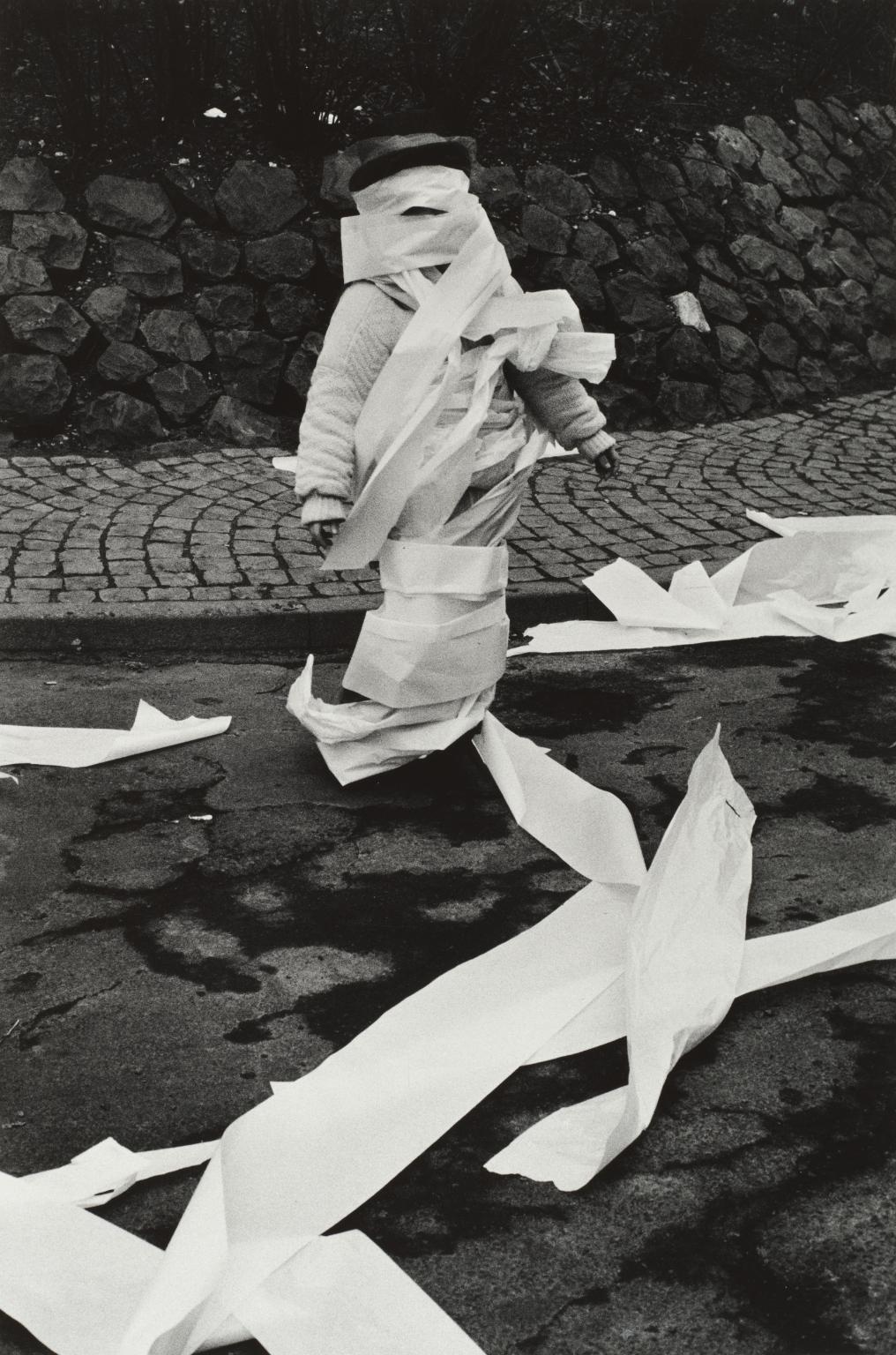
Josef Koudelka, Germany 1979
This work is from Josef Koudelka’s Exiles, a series of black and white photographs taken primarily during the 1970s while Koudelka was based in the United Kingdom. After leaving Czechoslovakia and being granted asylum to stay in Britain in 1970, Koudelka travelled and photographed continuously, domestically and in Europe (Portugal, Spain, France, Ireland, Germany and Switzerland), adopting a routine of following annual folk festivals from early spring to late autumn, then printing during the winter months in London. He commented on the condition of being in exile:
1/21
artworks in Leon Golub and Nancy Spero
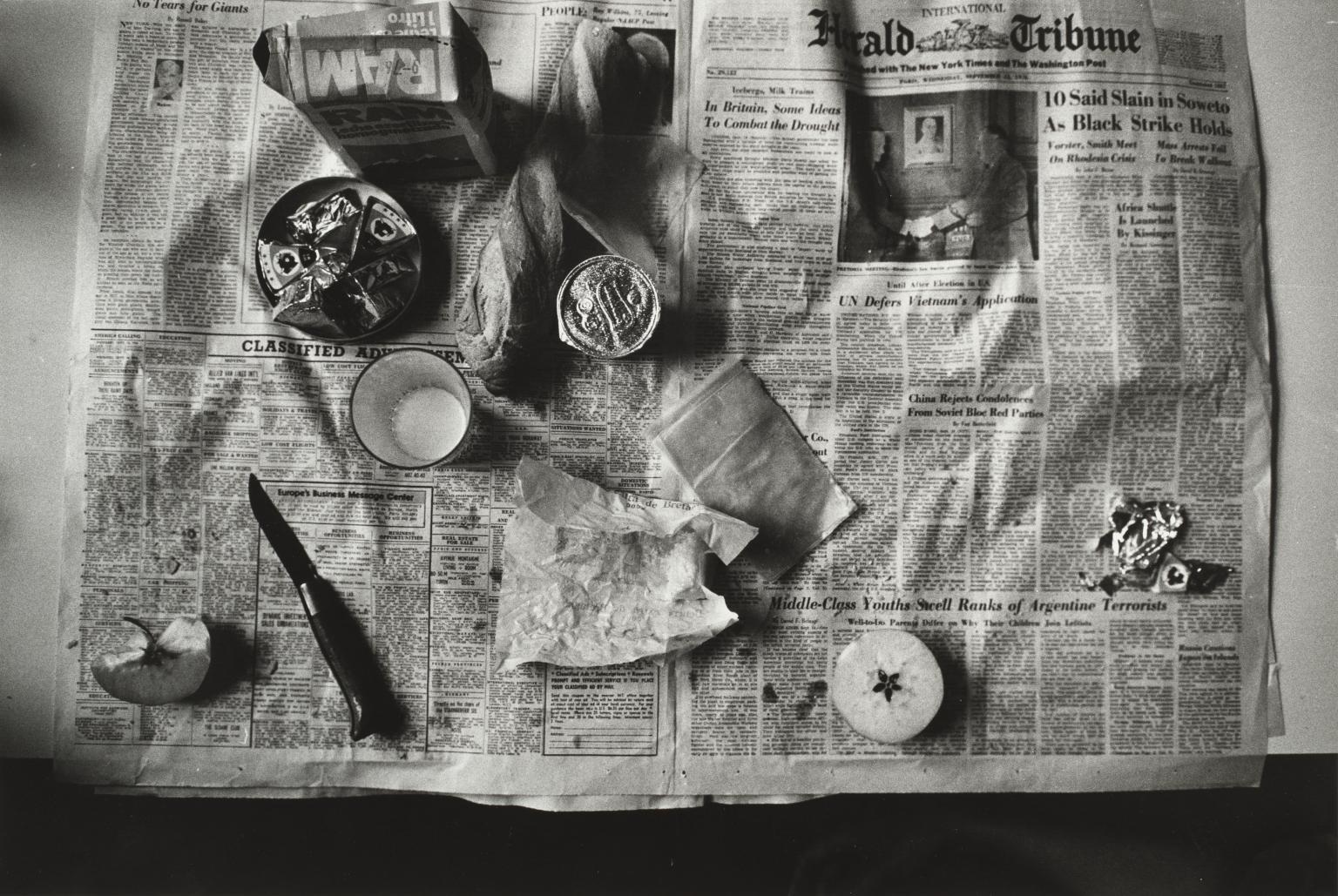
Josef Koudelka, France 1976
This work is from Josef Koudelka’s Exiles, a series of black and white photographs taken primarily during the 1970s while Koudelka was based in the United Kingdom. After leaving Czechoslovakia and being granted asylum to stay in Britain in 1970, Koudelka travelled and photographed continuously, domestically and in Europe (Portugal, Spain, France, Ireland, Germany and Switzerland), adopting a routine of following annual folk festivals from early spring to late autumn, then printing during the winter months in London. He commented on the condition of being in exile:
2/21
artworks in Leon Golub and Nancy Spero
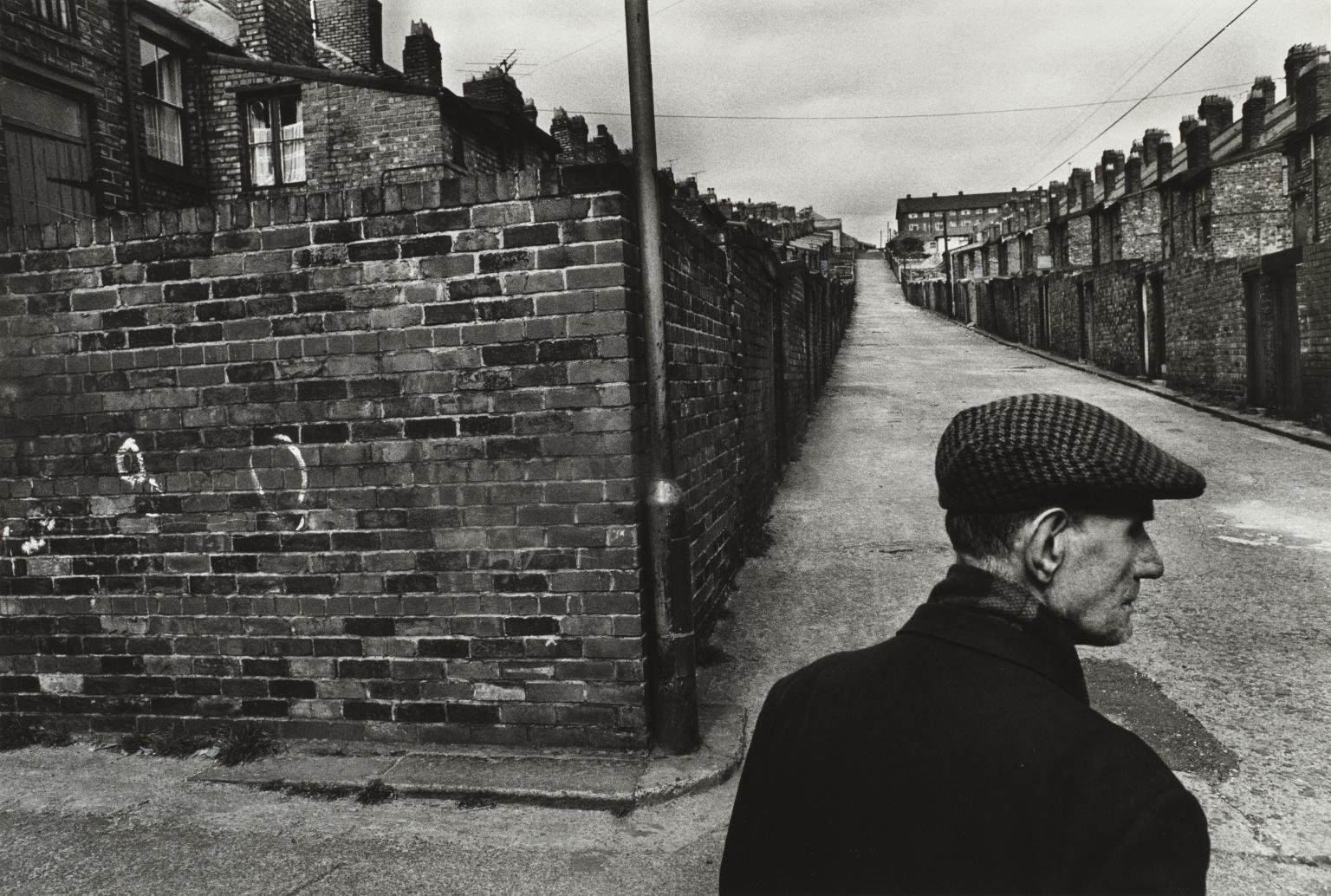
Josef Koudelka, England 1976
In Exiles, Josef Koudelka documents his travels across Europe after fleeing Czechoslovakia in 1970. He remained stateless until 1987 when he received French citizenship. This time in his life was characterised by a desire for freedom and a constant state of restlessness. According to Koudelka, he never stayed anywhere longer than three months. Exiles reflects his sense of displacement and discovery of both himself and his surroundings. His photographs of desolate landscapes, abandoned urban scenes and solitary moments show his understanding of complex composition and tone.
Gallery label, March 2025
3/21
artworks in Leon Golub and Nancy Spero
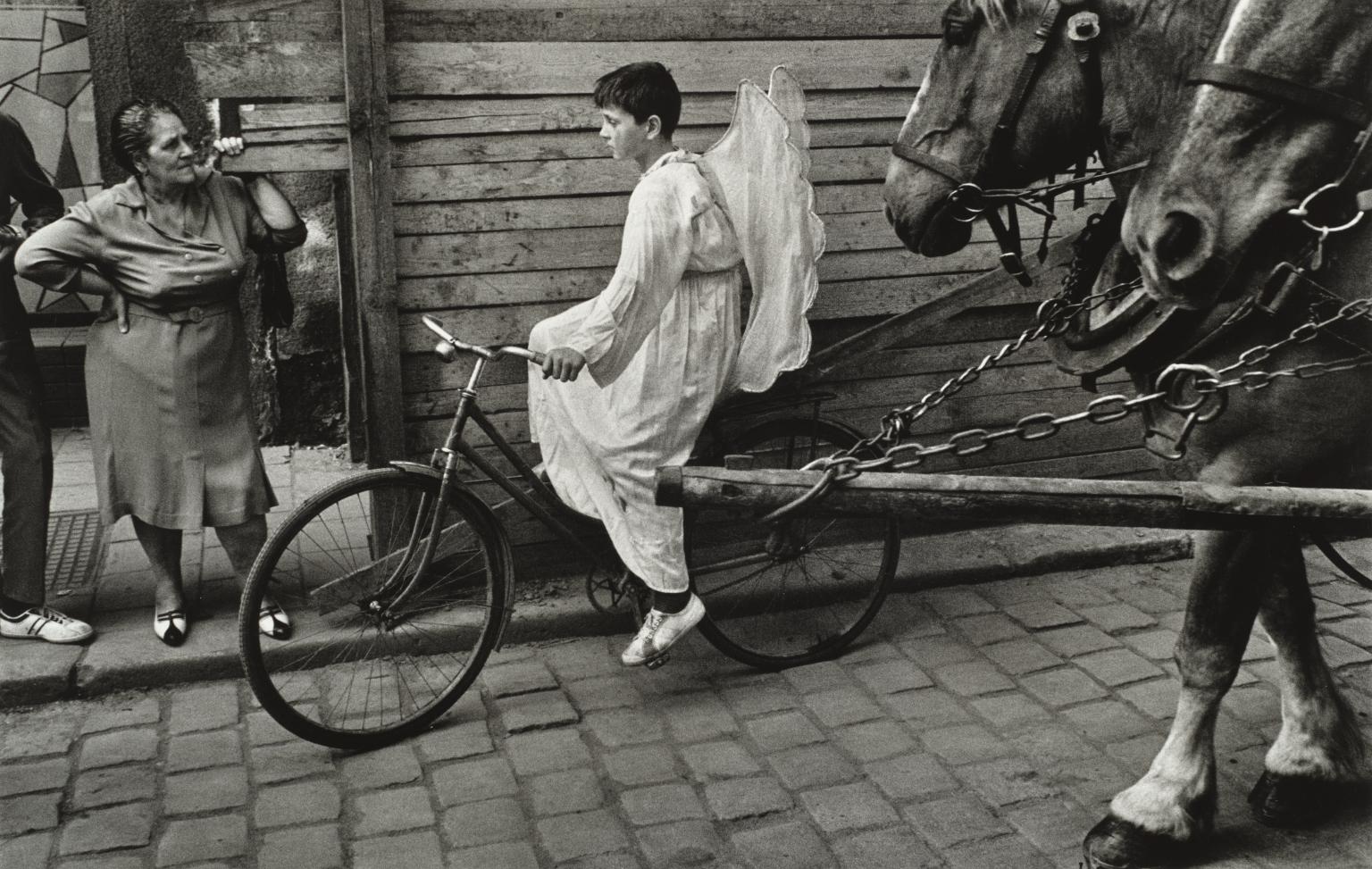
Josef Koudelka, Czechoslovakia 1968
This work is from Josef Koudelka’s Exiles, a series of black and white photographs taken primarily during the 1970s while Koudelka was based in the United Kingdom. After leaving Czechoslovakia and being granted asylum to stay in Britain in 1970, Koudelka travelled and photographed continuously, domestically and in Europe (Portugal, Spain, France, Ireland, Germany and Switzerland), adopting a routine of following annual folk festivals from early spring to late autumn, then printing during the winter months in London. He commented on the condition of being in exile:
4/21
artworks in Leon Golub and Nancy Spero
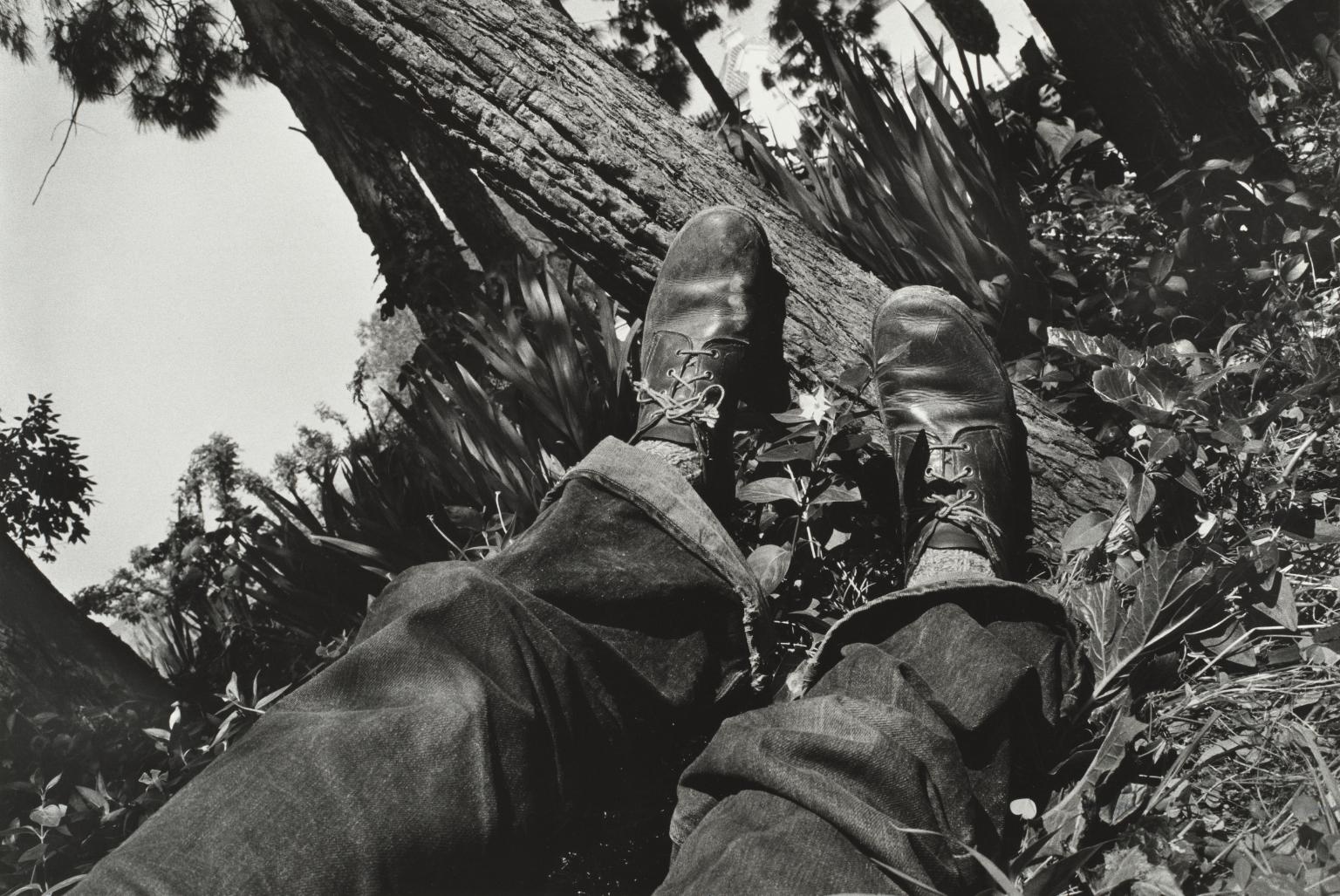
Josef Koudelka, Spain 1975
This work is from Josef Koudelka’s Exiles, a series of black and white photographs taken primarily during the 1970s while Koudelka was based in the United Kingdom. After leaving Czechoslovakia and being granted asylum to stay in Britain in 1970, Koudelka travelled and photographed continuously, domestically and in Europe (Portugal, Spain, France, Ireland, Germany and Switzerland), adopting a routine of following annual folk festivals from early spring to late autumn, then printing during the winter months in London. He commented on the condition of being in exile:
5/21
artworks in Leon Golub and Nancy Spero
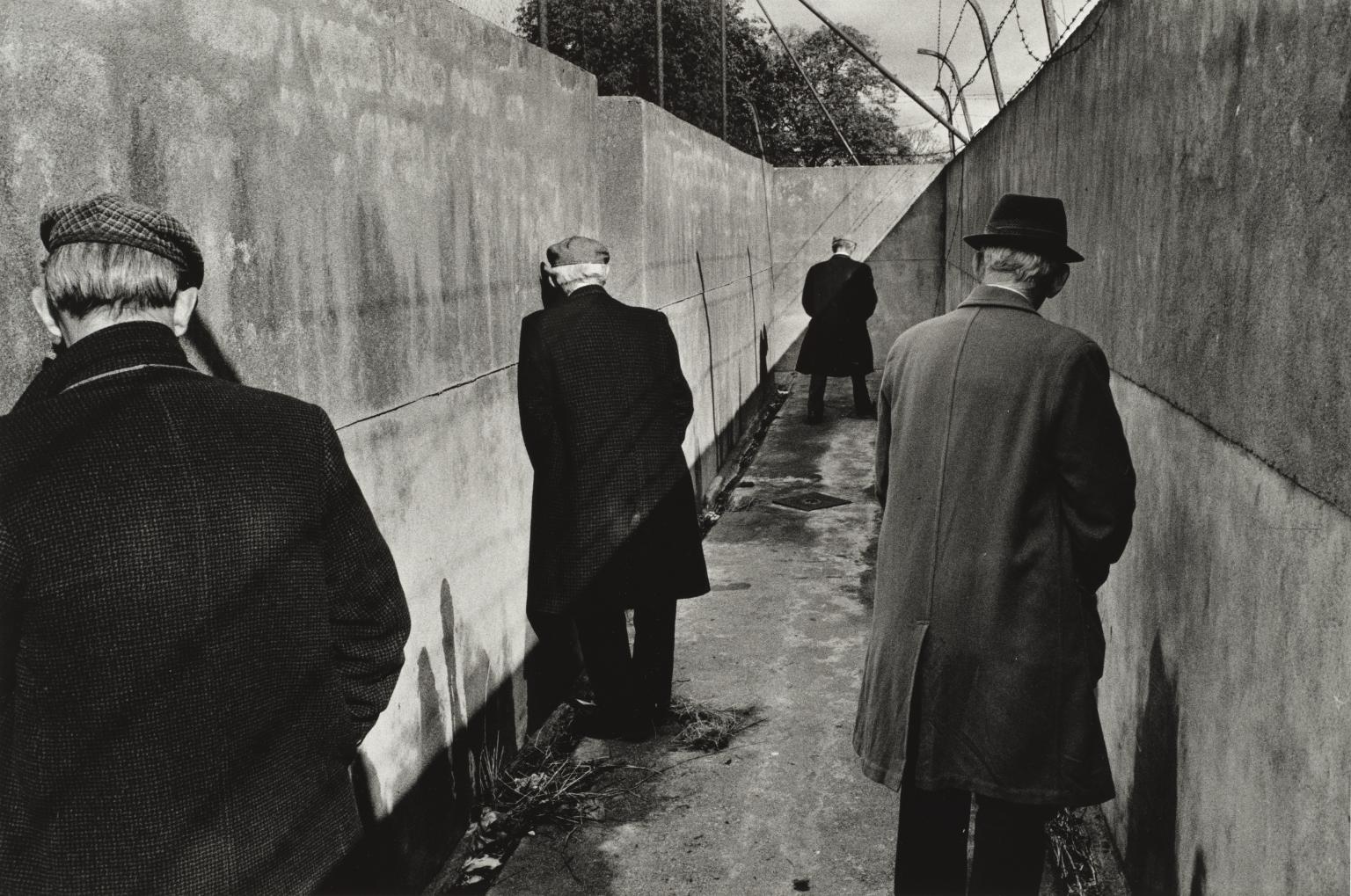
Josef Koudelka, Ireland 1976
This work is from Josef Koudelka’s Exiles, a series of black and white photographs taken primarily during the 1970s while Koudelka was based in the United Kingdom. After leaving Czechoslovakia and being granted asylum to stay in Britain in 1970, Koudelka travelled and photographed continuously, domestically and in Europe (Portugal, Spain, France, Ireland, Germany and Switzerland), adopting a routine of following annual folk festivals from early spring to late autumn, then printing during the winter months in London. He commented on the condition of being in exile:
6/21
artworks in Leon Golub and Nancy Spero
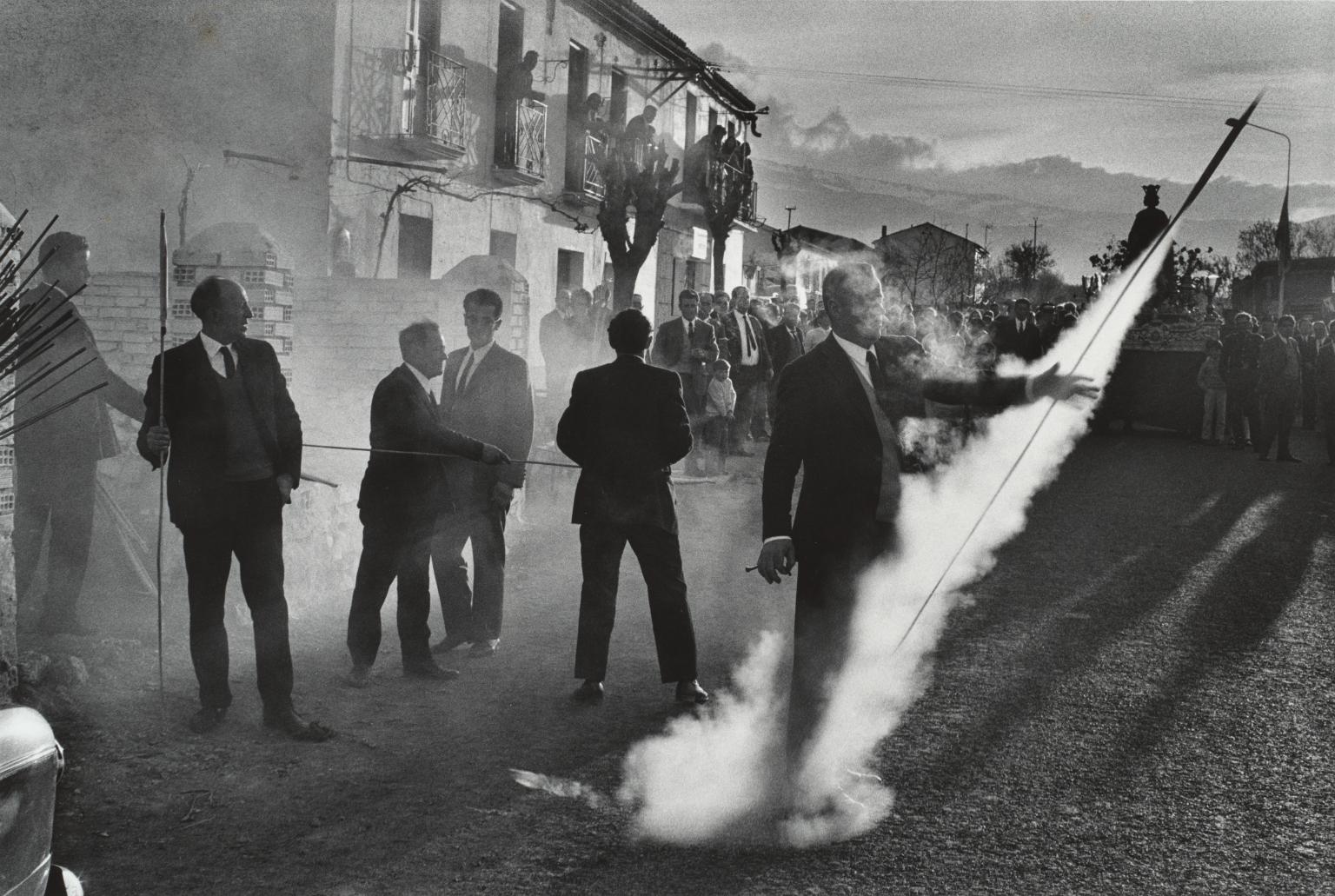
Josef Koudelka, Spain 1971
In Exiles, Josef Koudelka documents his travels across Europe after fleeing Czechoslovakia in 1970. He remained stateless until 1987 when he received French citizenship. This time in his life was characterised by a desire for freedom and a constant state of restlessness. According to Koudelka, he never stayed anywhere longer than three months. Exiles reflects his sense of displacement and discovery of both himself and his surroundings. His photographs of desolate landscapes, abandoned urban scenes and solitary moments show his understanding of complex composition and tone.
Gallery label, March 2025
7/21
artworks in Leon Golub and Nancy Spero
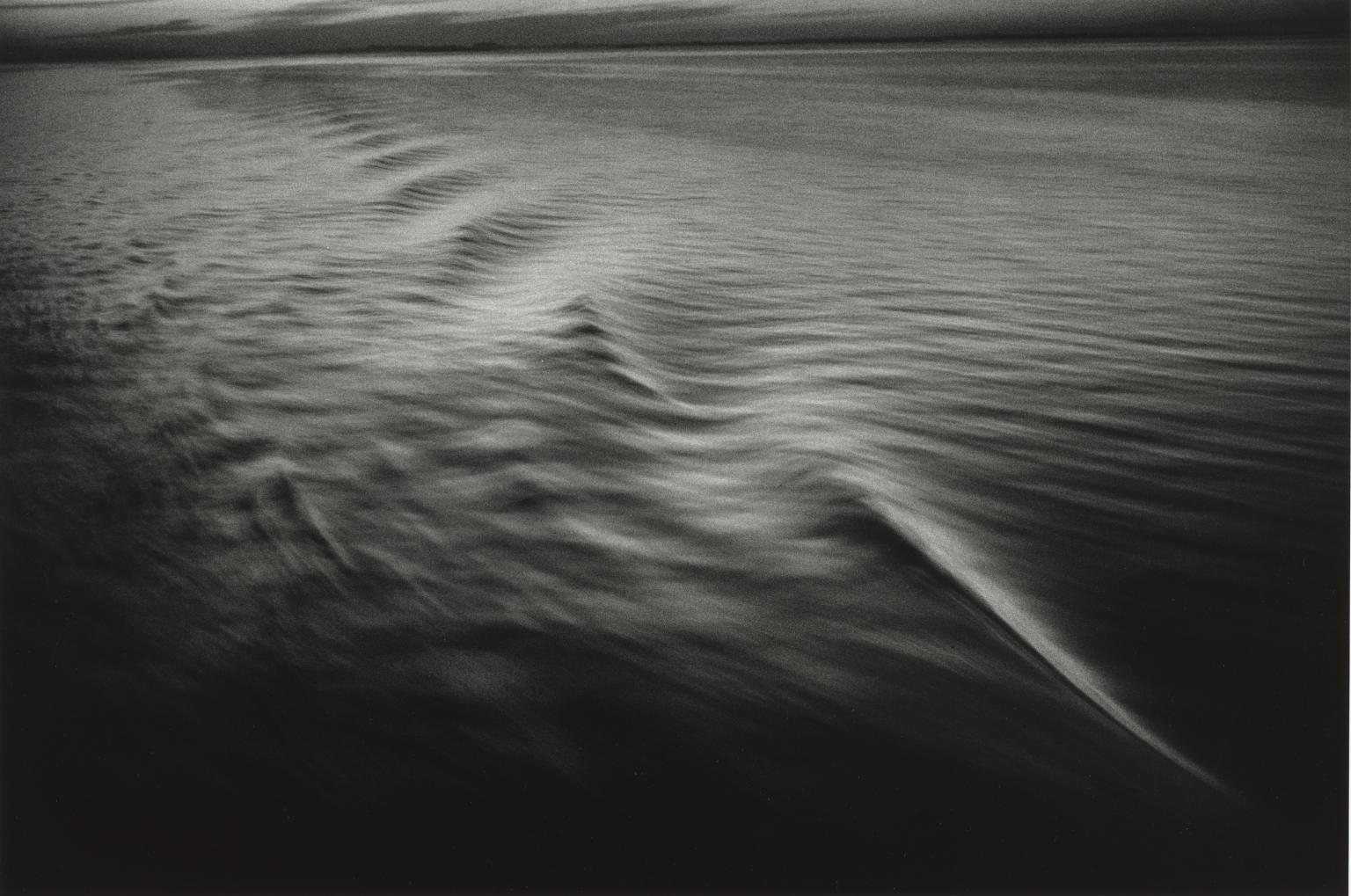
Josef Koudelka, Ireland 1977
In Exiles, Josef Koudelka documents his travels across Europe after fleeing Czechoslovakia in 1970. He remained stateless until 1987 when he received French citizenship. This time in his life was characterised by a desire for freedom and a constant state of restlessness. According to Koudelka, he never stayed anywhere longer than three months. Exiles reflects his sense of displacement and discovery of both himself and his surroundings. His photographs of desolate landscapes, abandoned urban scenes and solitary moments show his understanding of complex composition and tone.
Gallery label, March 2025
8/21
artworks in Leon Golub and Nancy Spero
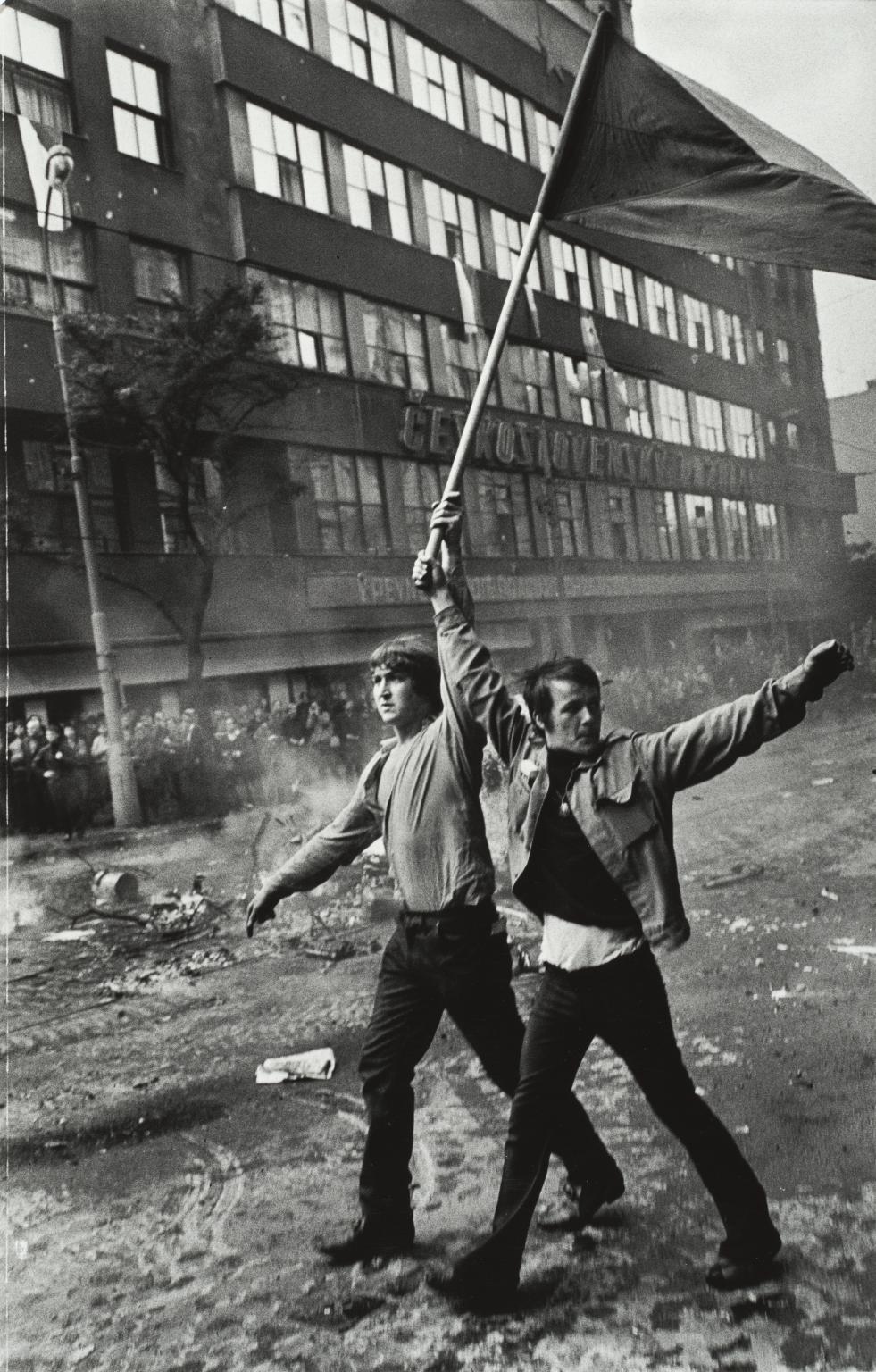
Josef Koudelka, Defending the Czechoslovak Radio Building, Prague, August 1968 1968, printed 1970s
‘The Russian invasion of Czechoslovakia in August 1968 concerned my life directly. It was my country. I took these photographs for myself, not for a magazine. It was only by chance that they were published. I wasn’t a reporter. I had never photographed anything that you would call ‘news’. Suddenly, for the first time in my life, I was confronted with that kind of situation. I responded to it. I knew it was important to photograph, so I photographed.’
Taken with remarkable proximity, Josef Koudelka’s photographs were first shown to the international public the following year. For his safety, they were credited to ‘an unknown photographer’.
Gallery label, March 2025
9/21
artworks in Leon Golub and Nancy Spero
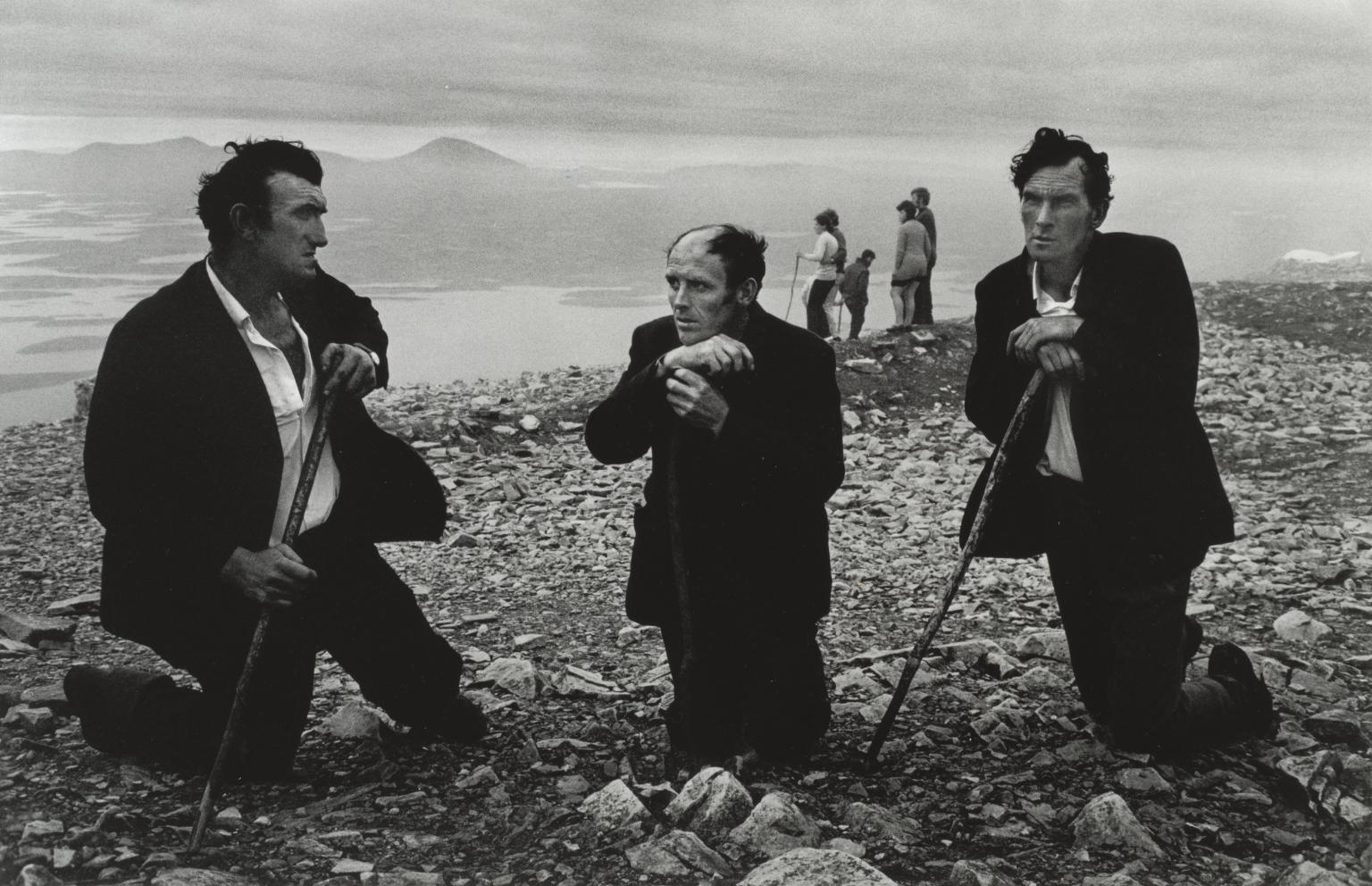
Josef Koudelka, Ireland 1972
This work is from Josef Koudelka’s Exiles, a series of black and white photographs taken primarily during the 1970s while Koudelka was based in the United Kingdom. After leaving Czechoslovakia and being granted asylum to stay in Britain in 1970, Koudelka travelled and photographed continuously, domestically and in Europe (Portugal, Spain, France, Ireland, Germany and Switzerland), adopting a routine of following annual folk festivals from early spring to late autumn, then printing during the winter months in London. He commented on the condition of being in exile:
10/21
artworks in Leon Golub and Nancy Spero
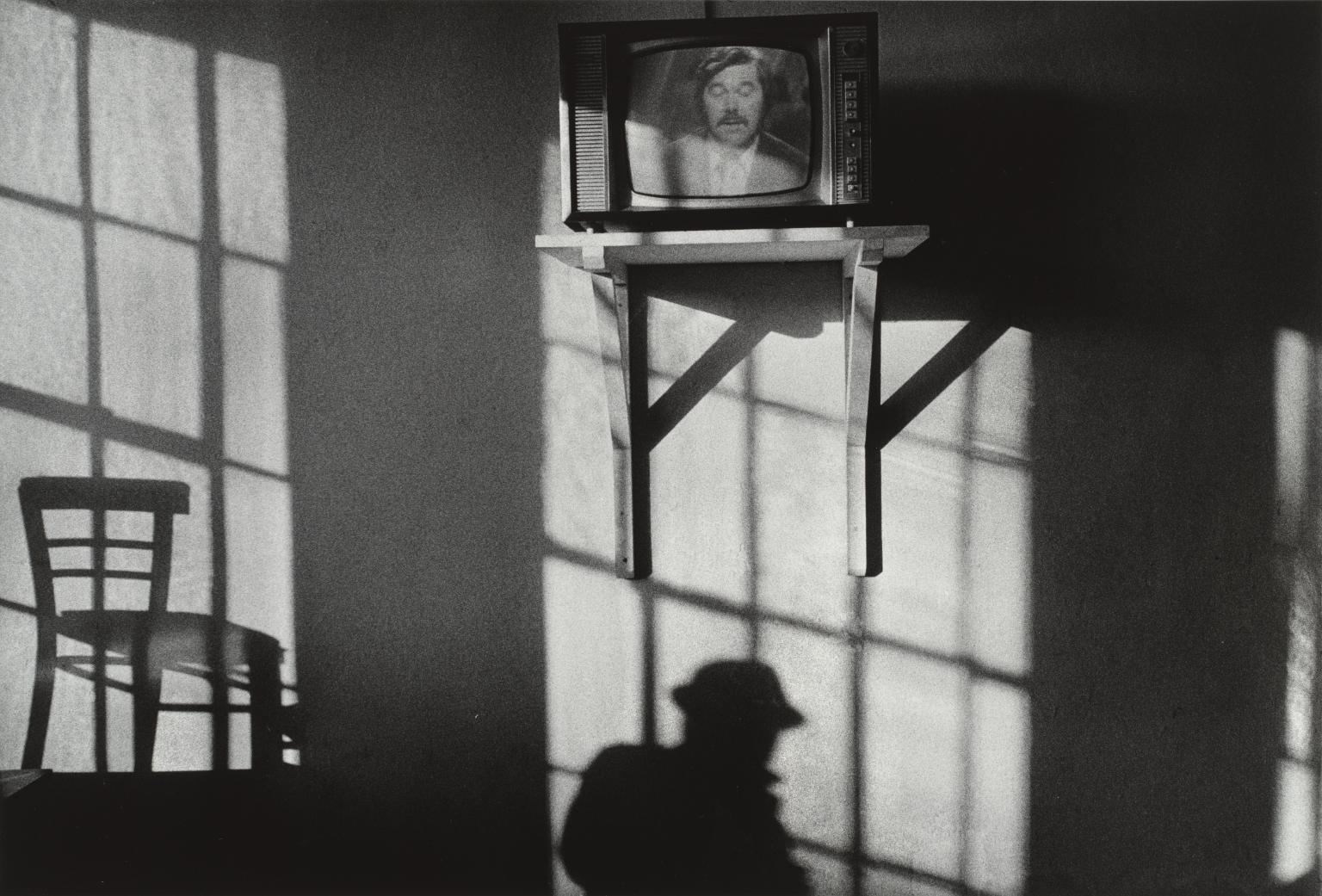
Josef Koudelka, Wales 1974
11/21
artworks in Leon Golub and Nancy Spero
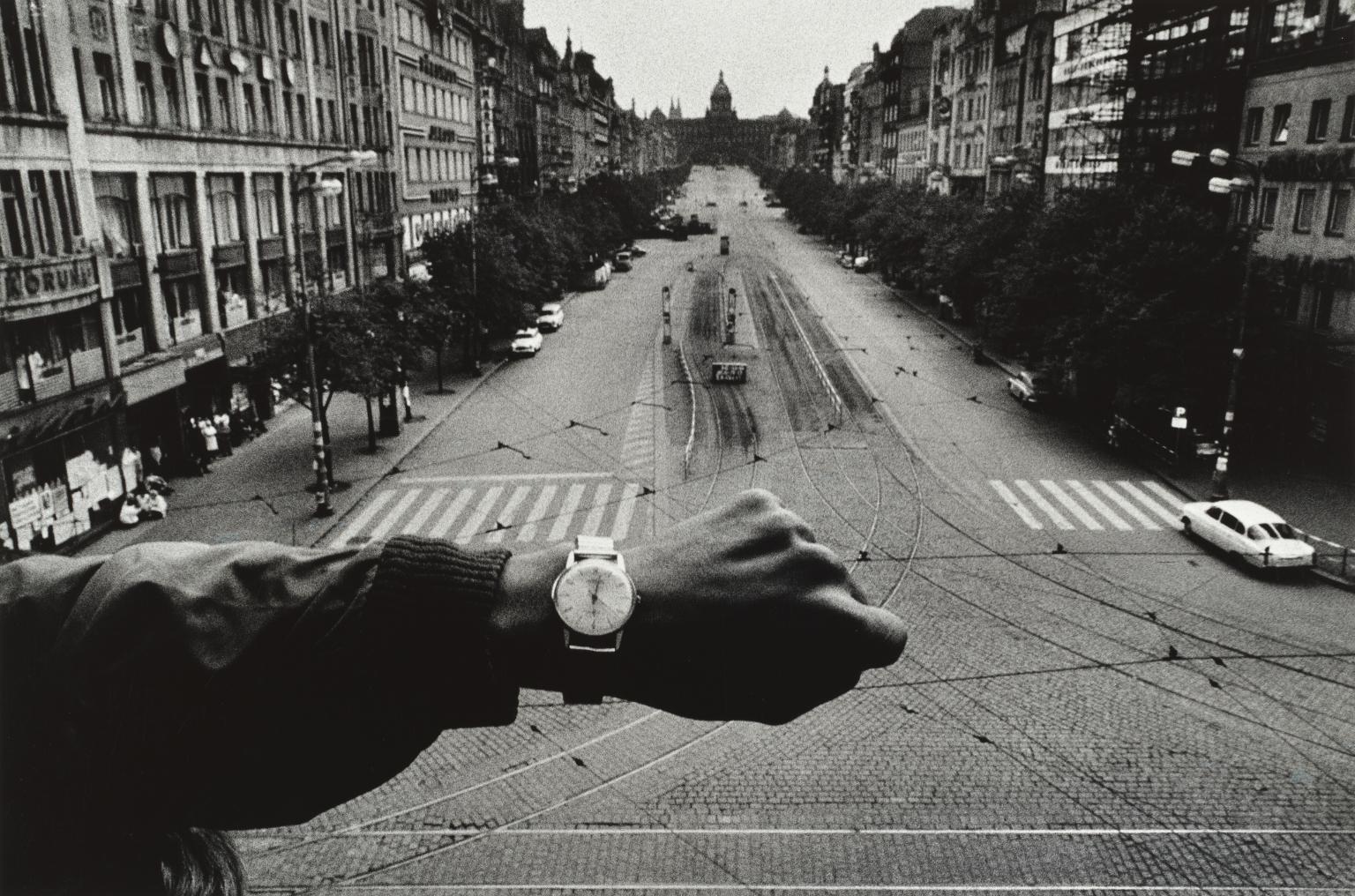
Josef Koudelka, On 22 and 23 August, Wenceslas Square was Cleared of People, August 1968 1968, printed 1970s
This image of an arm held up against Prague’s Wenceslas Square has become Josef Koudelka’s most iconic photograph. The usually bustling square is eerily quiet. For a long time, Koudelka thought he had taken the photograph at 6pm. This would have been proof the Czechoslovakian people had not fallen for a Soviet ruse to attend an evening protest and given the soldiers an excuse to attack. Years later, however, he realised the watch read 12 noon when the square had also been cleared.
Gallery label, March 2025
12/21
artworks in Leon Golub and Nancy Spero
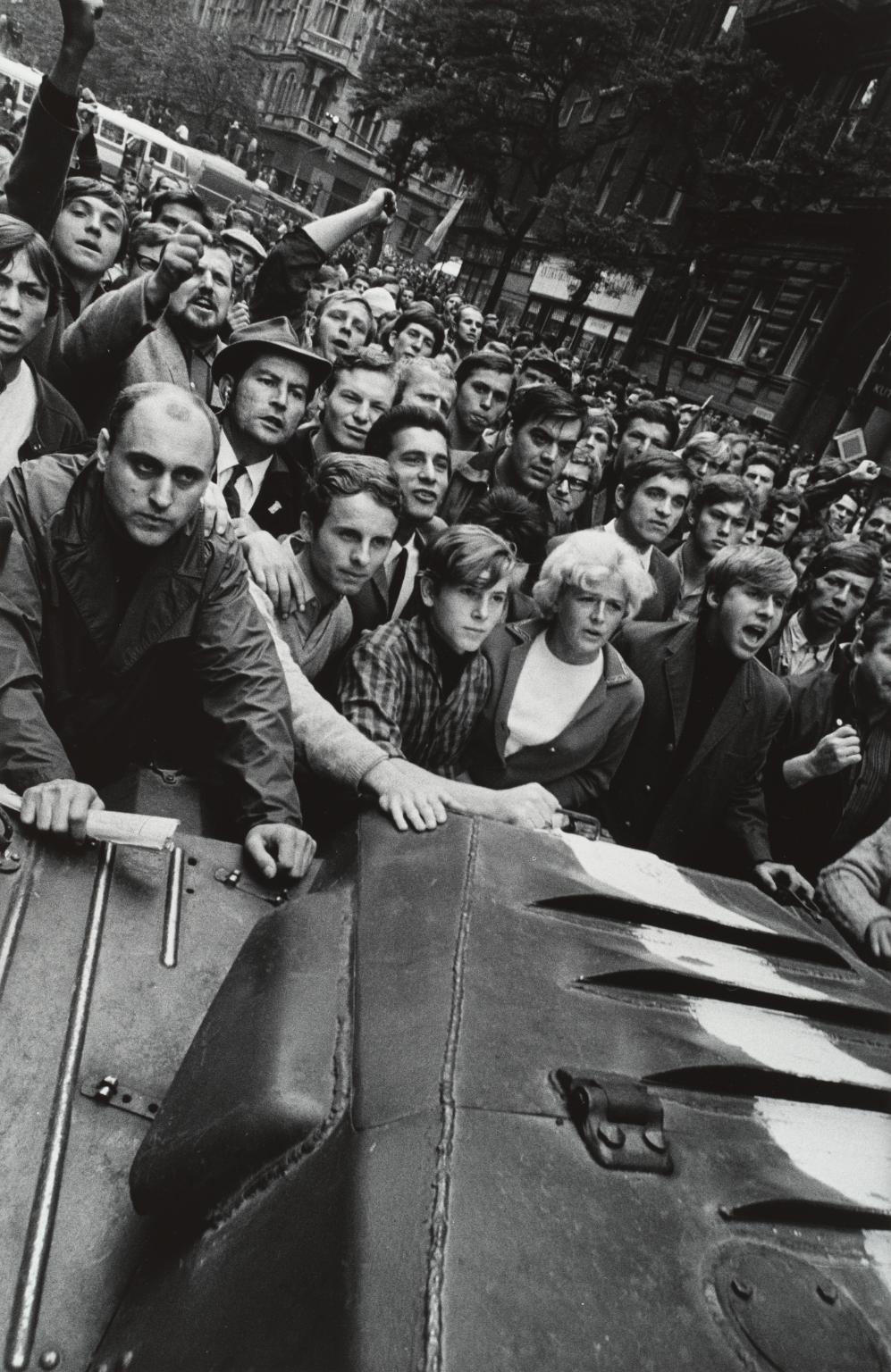
Josef Koudelka, Czechoslovakia, Prague, August 21st, 1968. Warsaw Pact tanks invade Prague, near the Radio headquarters, crowds push back the first tank 1968
‘The Russian invasion of Czechoslovakia in August 1968 concerned my life directly. It was my country. I took these photographs for myself, not for a magazine. It was only by chance that they were published. I wasn’t a reporter. I had never photographed anything that you would call ‘news’. Suddenly, for the first time in my life, I was confronted with that kind of situation. I responded to it. I knew it was important to photograph, so I photographed.’
Taken with remarkable proximity, Josef Koudelka’s photographs were first shown to the international public the following year. For his safety, they were credited to ‘an unknown photographer’.
Gallery label, March 2025
13/21
artworks in Leon Golub and Nancy Spero
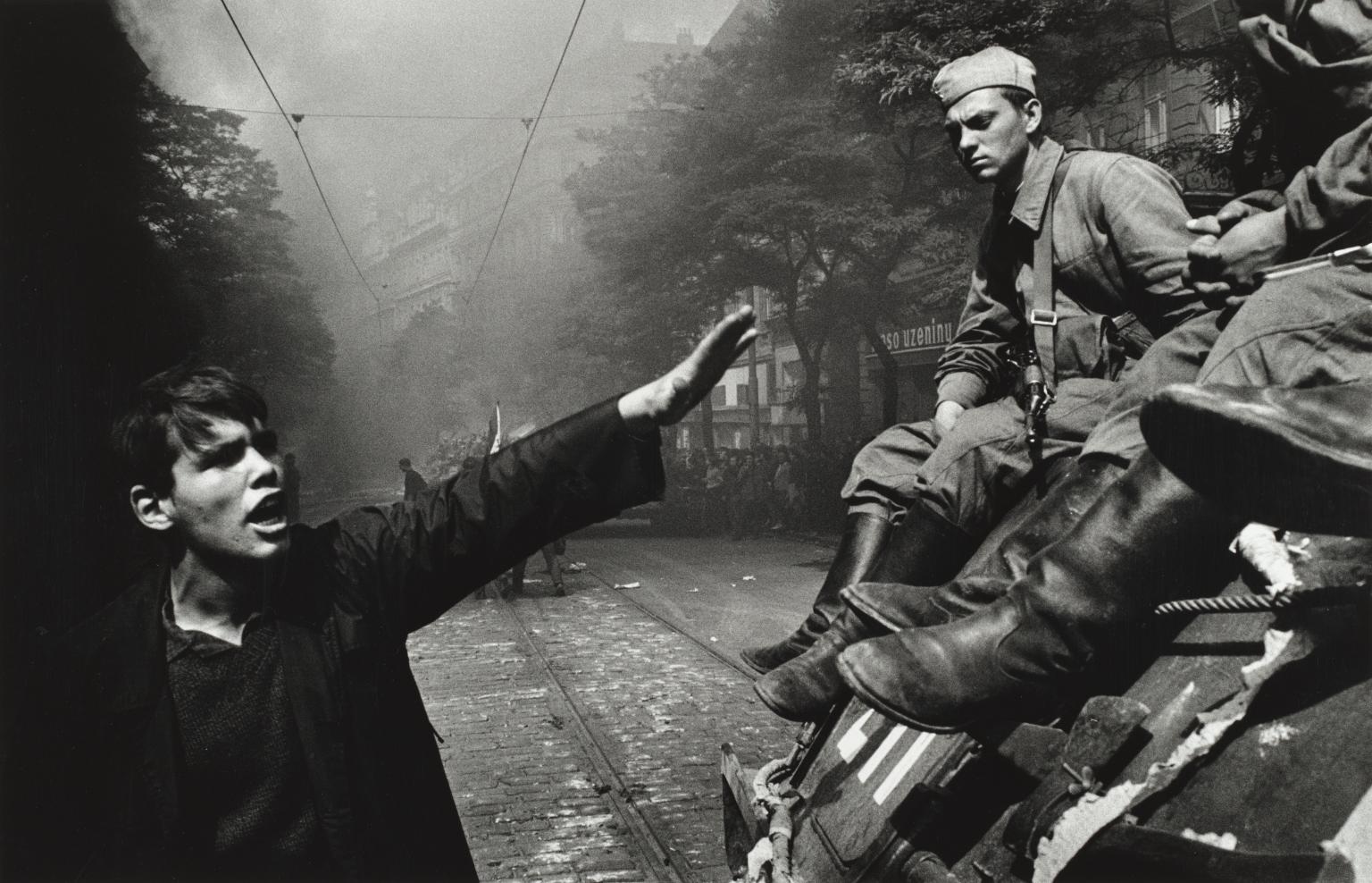
Josef Koudelka, At the Czechoslovak Radio Building, Vinohradská Avenue, Prague, August 1968 1968, printed 1970s
‘The Russian invasion of Czechoslovakia in August 1968 concerned my life directly. It was my country. I took these photographs for myself, not for a magazine. It was only by chance that they were published. I wasn’t a reporter. I had never photographed anything that you would call ‘news’. Suddenly, for the first time in my life, I was confronted with that kind of situation. I responded to it. I knew it was important to photograph, so I photographed.’
Taken with remarkable proximity, Josef Koudelka’s photographs were first shown to the international public the following year. For his safety, they were credited to ‘an unknown photographer’.
Gallery label, March 2025
14/21
artworks in Leon Golub and Nancy Spero

Josef Koudelka, Czechoslovakia, Slovakia, Rakasy 1966
15/21
artworks in Leon Golub and Nancy Spero

Josef Koudelka, Romania 1968
Josef Koudelka’s first photography series, Gypsies, captures the daily lives of Roma communities in Bohemia, Moravia and Slovakia (then Czechoslovakia), as well as Hungary, France, Romania and Spain. The series documents a period of post-war upheaval when Roma people were undergoing forced integration and persecution across Europe. Using a 25mm wide-angle lens, Koudelka was able to immerse himself in intimate settings and small spaces. Known as ‘Ikonar’ (maker of icons) by some of the communities he worked with, he captured Roma traditions, struggles and resilience in striking compositions.
Gallery label, March 2025
16/21
artworks in Leon Golub and Nancy Spero

Josef Koudelka, Ireland 1970
Josef Koudelka’s first photography series, Gypsies, captures the daily lives of Roma communities in Bohemia, Moravia and Slovakia (then Czechoslovakia), as well as Hungary, France, Romania and Spain. The series documents a period of post-war upheaval when Roma people were undergoing forced integration and persecution across Europe. Using a 25mm wide-angle lens, Koudelka was able to immerse himself in intimate settings and small spaces. Known as ‘Ikonar’ (maker of icons) by some of the communities he worked with, he captured Roma traditions, struggles and resilience in striking compositions.
Gallery label, March 2025
17/21
artworks in Leon Golub and Nancy Spero

Josef Koudelka, Czechoslovakia, Slovakia, Zehra 1967
Josef Koudelka’s first photography series, Gypsies, captures the daily lives of Roma communities in Bohemia, Moravia and Slovakia (then Czechoslovakia), as well as Hungary, France, Romania and Spain. The series documents a period of post-war upheaval when Roma people were undergoing forced integration and persecution across Europe. Using a 25mm wide-angle lens, Koudelka was able to immerse himself in intimate settings and small spaces. Known as ‘Ikonar’ (maker of icons) by some of the communities he worked with, he captured Roma traditions, struggles and resilience in striking compositions.
Gallery label, March 2025
18/21
artworks in Leon Golub and Nancy Spero

Josef Koudelka, Czechoslovakia, Slovakia, Kendice 1966
19/21
artworks in Leon Golub and Nancy Spero

Josef Koudelka, Czechoslovakia, Slovakia, Klenovec 1967
Josef Koudelka’s first photography series, Gypsies, captures the daily lives of Roma communities in Bohemia, Moravia and Slovakia (then Czechoslovakia), as well as Hungary, France, Romania and Spain. The series documents a period of post-war upheaval when Roma people were undergoing forced integration and persecution across Europe. Using a 25mm wide-angle lens, Koudelka was able to immerse himself in intimate settings and small spaces. Known as ‘Ikonar’ (maker of icons) by some of the communities he worked with, he captured Roma traditions, struggles and resilience in striking compositions.
Gallery label, March 2025
20/21
artworks in Leon Golub and Nancy Spero

Josef Koudelka, Czechoslovakia, Slovakia, Zehra 1967
Josef Koudelka’s first photography series, Gypsies, captures the daily lives of Roma communities in Bohemia, Moravia and Slovakia (then Czechoslovakia), as well as Hungary, France, Romania and Spain. The series documents a period of post-war upheaval when Roma people were undergoing forced integration and persecution across Europe. Using a 25mm wide-angle lens, Koudelka was able to immerse himself in intimate settings and small spaces. Known as ‘Ikonar’ (maker of icons) by some of the communities he worked with, he captured Roma traditions, struggles and resilience in striking compositions.
Gallery label, March 2025
21/21
artworks in Leon Golub and Nancy Spero
Art in this room





















You've viewed 6/21 artworks
You've viewed 21/21 artworks
